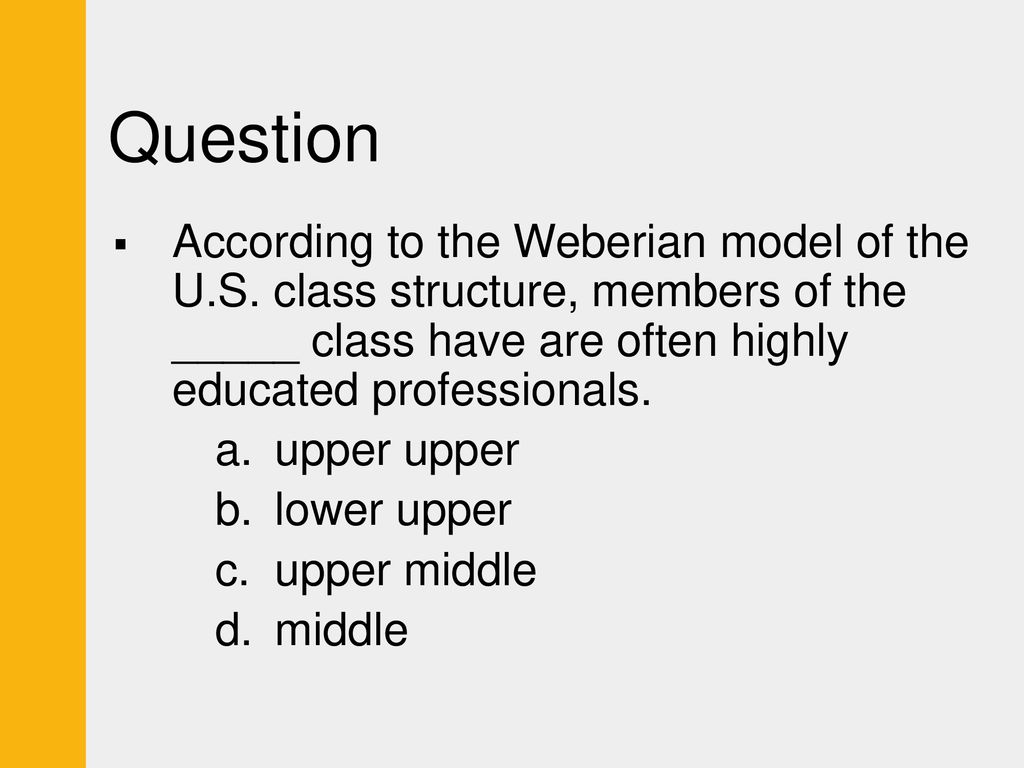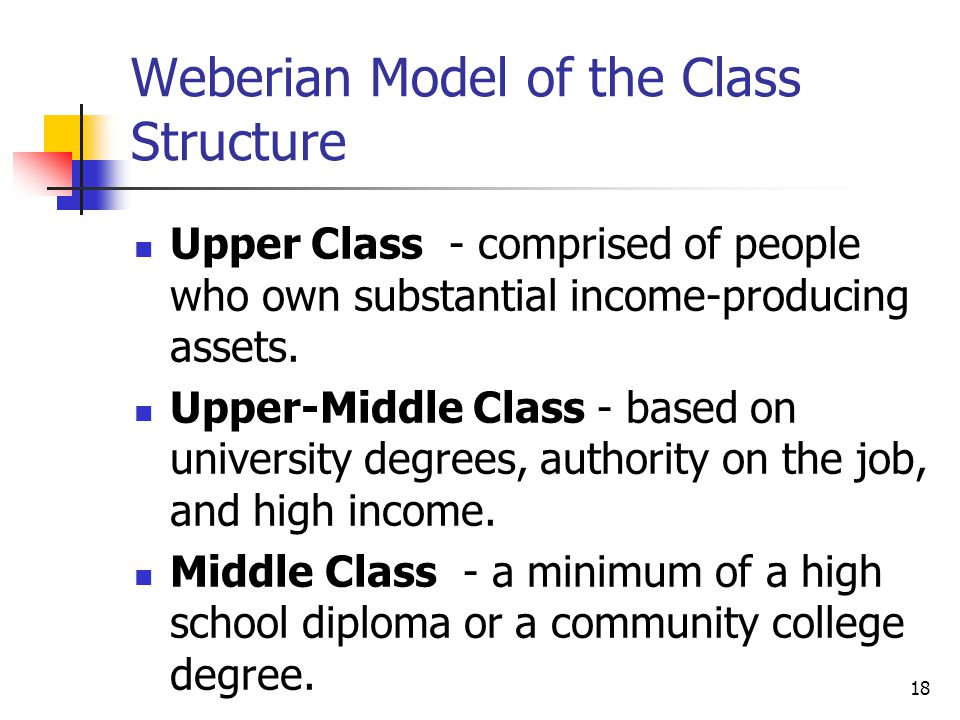The Weberian model of class structure, developed by sociologist Max Weber, is a means of analyzing social stratification in terms of economic status, social status, and power. According to Weber, class is determined by a combination of an individual's economic position in society, their social status, and their level of power and influence.
In terms of economic position, Weber's model identifies three main classes: the upper class, the middle class, and the lower class. The upper class, also known as the bourgeoisie, consists of those who own and control the means of production, such as factories, land, and businesses. They have a high level of economic capital, which allows them to wield a significant amount of power and influence. The middle class, also known as the petite bourgeoisie, consists of those who do not own the means of production but have a certain level of economic independence, such as small business owners or professionals. They have a moderate level of economic capital and, as a result, hold a moderate level of power and influence. The lower class, also known as the proletariat, consists of those who do not own the means of production and must work for wages. They have a low level of economic capital and, as a result, hold a low level of power and influence.
In addition to economic position, Weber's model also takes into account social status, which refers to an individual's prestige or respect within society. Social status is often determined by an individual's education, occupation, and lifestyle. Those with a high social status, such as intellectuals or those with prestigious occupations, are often seen as more respected and influential within society. Those with a lower social status, such as manual laborers or those in low-paying occupations, may be seen as less respected and influential.
Finally, Weber's model also considers power and influence, which refers to an individual's ability to make decisions that affect others. Those with a high level of power and influence, such as politicians or business leaders, have a greater ability to shape the direction of society and make decisions that affect the lives of others. Those with a lower level of power and influence, such as those in low-paying or low-status occupations, have less ability to shape society and make decisions that affect others.
Overall, the Weberian model of class structure is a useful tool for understanding the complex interplay between economic position, social status, and power in determining an individual's place within society. It highlights the fact that class is not solely determined by economic position, but is also influenced by social status and power, and that these factors often intersect and overlap in complex ways.








